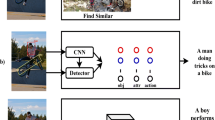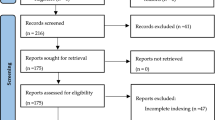Abstract
Oracle bone inscriptions (OBIs) contain some of the oldest characters in the world and were used in China about 3000 years ago. As an ancient form of literature, OBIs store a lot of information that can help us understand world history, character evaluations, and more. However, as OBIs were only discovered about 120 years ago, few studies have described them, and the aging process has made the inscriptions less legible. Hence, automatic character detection and recognition have become important issues. This paper aims to design an online OBI recognition system for helping cultural heritage preservation and organization. We have evaluated two deep learning models for OBI recognition and designed an application programming interface (API) that can be accessed online for the recognition. In the first stage, You Only Look Once (YOLO) is applied for detecting and recognizing OBIs. However, since not all of the OBIs can be detected correctly by YOLO in the first stage, we then utilize MobileNet to recognize the undetected OBIs by manually cropping the undetected OBIs in the image. MobileNet is selected for the second stage of recognition as our evaluation of ten state-of-the-art deep learning models showed that it is the best network for OBI recognition due to its superior performance in terms of accuracy, loss and time consumption. We have installed our system on a server as an API and opened it for OBI detection and recognition.






Similar content being viewed by others
References
Anyang Normal University. OBI database, 2019.
Andrew Howard, G., Zhu, M., Chen, B., Kalenichenko, D., Wang, W., Wey, T., Andreetto, M., & Adam, H. (2017). Mobilenets: Efficient convolutional neural networks for mobile vision applications. Doi: arXiv:1704.04861v1.
Cholle, F. (2017). Xception: Deep learning with depthwise separable convolution. In IEEE Conference on Pattern Recognition and Computer Vision, PRCV 2017.
Guo, J., Wang, C., Roman-Rangel, E., Chao, H., & Rui, Y. (2016). Building hierarchical representations for oracle character and sketch recognition. IEEE Transactions on Image Processing, 25(1), 104–118.
He, K., Zhang, X., Ren, S., & Sun, J. (2016). Deep residual learning for image recognition. In Computer Vision and Pattern Recognition, CVPR 2016.
Joseph, R., & Farhadi, A. (2018). Yolov3: An incremental improvement. In Computer Vision and Pattern Recognition, CVPR 2018.
Krizhevsky, A., Sutskever, I., & E.Hinton, G. (2012). Imagenet classification with deep convolutional neural networks. In Advances in Neural Information Processing Systems, NIPS 2012.
Lecun, Y., Bottou, L., Bengio, Y., & Haffner, P. (1998). Gradient-based learning applied to document recognition. In Proceedings of the IEEE, 2278–2324.
Li, F., & Woo, P. (2007). The coding principle and method for automatic recognition of jia gu wen characters. International Journal of Human-Computer Studies, 53(2), 289–299.
Li, Q., & Yang, Y. (2008). Sticker DNA algorithm of oracle-bone inscriptions retrieving. Computer Engineering and Application, 44(28), 140–142.
Li, Q., Yang, Y., & Wang, A. (2011). Recognition of inscriptions on bones or tortoise shells based on graph isomorphism. Computer Engineering and Application, 47(8), 112–114.
Liu, G., & Gao, F. (2018). Oracle-bone inscription recognition based on deep convolutional neural network. Journal of Computers, 13(12), 1442–1450.
Liu, W., Anguelov, D., Erhan, D., Szegedy, C., Reed, S., Fu, C., & C. Berg, A. (2018). Ssd: Single shot multibox detector.
Lyu, B., Meng, L., & Tomiyama, H. (2020). Frame Detection and Text Line Segmentation for Early Japanese Books Understanding,In Proceedings of the 9th International Conference on Pattern Recognition Applications and Methods, ICPRAM 2020, pp.600--606.
Meng, L. (2017a). Recognition of oracle bone inscriptions by extracting line features on image processing. In Proceedings of the 6th Int. Conf. on Pattern Recognition Applications and Methods, ICPRAM 2017a, pp. 210–217.
Meng, L. (2017b). Two-stage recognition for oracle bone inscriptions. In Proceedings of Image Analysis and Processing, Part II, LNCS 10485 ICIAP 2017b, pp. 672–682.
Meng, L. (2020). Oracle bone database, URL http://www.ihpc.se.ritsumei.ac.jp/obidataset.html. Accessed 31 Nov 2021
Meng, L., Izumi, T., & Oyanagi, S. (2015). Recognition of oracular bone inscriptions by clustering and matching on the hough space. Journal of the Institute of Image Electronics Engineers of Japan, 44(4), 627–636.
Meng, L., Fujikawa, Y., Ochiai, A., Izumi, T., & Yamazaki, K. (2016). Recognition of oracular bone inscriptions using template matching. International Journal of Computer Theory and Engineering, 8(1), 53–57.
Meng, L., Aravinda, C.V.., Reddy, K.R., Izumi, T., & Yamazaki, K. (2018). Ancient asian character recognition for literature preservation and understanding. In 7th International Conference, EuroMed 2018, pp. 741–751.
Meng, L., Lyu, B., Zhang, Z., C.V., A., Kamitoku, N., & Yamazaki, K. (2019a). Oracle bone inscription detector based on ssd. In Proceedings of New Trends in Image Analysis and Processing, ICIAP 2019a, pp. 126–136.
Meng, L., Aravinda, C.V., & Amar Prabhu G. (2019b). Obi application, b. URL http://www.atait.se.ritsumei.ac.jp/OBI/ssdapi/
Ochiai, A. (2014). Oracle Bone Inscriptions Database. Reviews of Modern Physics, pp. 135–163
Redmon, J. (2016). Darknet: Open source neural networks in c. URL http://pjreddie.com/darknet/
Sandler, M., Howard, A., Zhu, M., Zhmoginov, A., & Chen, L. (2018). Mobilenetv2: Inverted residuals and linear bottleneck. In Proceedings of the IEEE Conference on Computer Vision and Pattern Recognition, CVPR 2018.
Simonyan, K., & Zisserman, A. (2015). Very deep convolutional networks for large-scale image recognition. In Advances in Neural Information Processing Systems, NIPS 2015.
Szegedy, C., Liu, W., Jia, Y., Sermanet, P., Reed, S., Anguelov, D., Erhan, D., Vanhoucke, V., & Rabinovich, A. (2015). Going deeper with convolutions. In 2015 IEEE Conf. on Computer Vision and Pattern Recognition, CVPR 2015.
Szegedy, C., Vanhoucke, V., Ioffe, S., Shlens, J., & Wojna, Z. (2016). Rethinking the inception architecture for computer vision. In IEEE Conference on Pattern Recognition and Computer Vision, PRCV 2016.
Szegedy, C., Ioffe, S., Vanhoucke, V., & Alemi, A (2017). Inception-v4, inception- resnet and the impact of residual connections on learning. In Proceedings of the Thirty-First AAAI Conference on Artificial Intelligence, AAAI 2017.
Xue, X., Zhou, D., Chen, F., Yu, X., Feng, Z., Duan, Y., Meng, L., & Zhang, M. (2021). From SOA to VOA: A Shift in Understanding the Operation and Evolution of Service Ecosystem. In IEEE Transactions on Services Computing. https://doi.org/10.1109/TSC.2021.3134718
Zuo, P. (2009). Shanghai Bo Wu Guan Cang Jia Gu Wen Zi. Shanghai bo wu guan, Shanghai, China. ISBN 9787532626915.
Acknowledgements
This work was supported by a Grant-in-Aid for Scientists (18K18337) from the Japan Society for the Promotion of Science (JSPS), the Ritsumeikan University Art Research Center, and Key Laboratory for Oracle Bone Script Information Processing (Anyang Normal University).
Author information
Authors and Affiliations
Corresponding author
Ethics declarations
Conflict of interest statement
We declare that we have no financial and personal relationships with other people or organizations that can inappropriately influence our work, there is no professional or other personal interest of any nature or kind in any product, service and/or company that could be construed as influencing the position presented in, or the review of, the manuscript.
Rights and permissions
About this article
Cite this article
Fujikawa, Y., Li, H., Yue, X. et al. Recognition of Oracle Bone Inscriptions by using Two Deep Learning Models. Int J Digit Humanities 5, 65–79 (2023). https://doi.org/10.1007/s42803-022-00044-9
Received:
Accepted:
Published:
Issue Date:
DOI: https://doi.org/10.1007/s42803-022-00044-9




